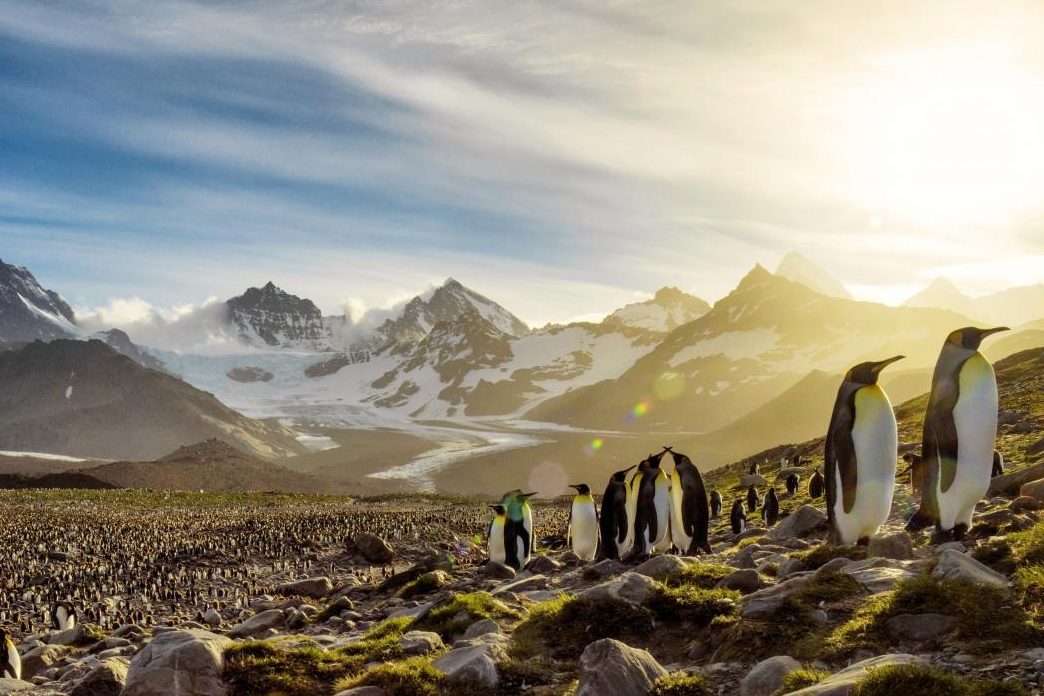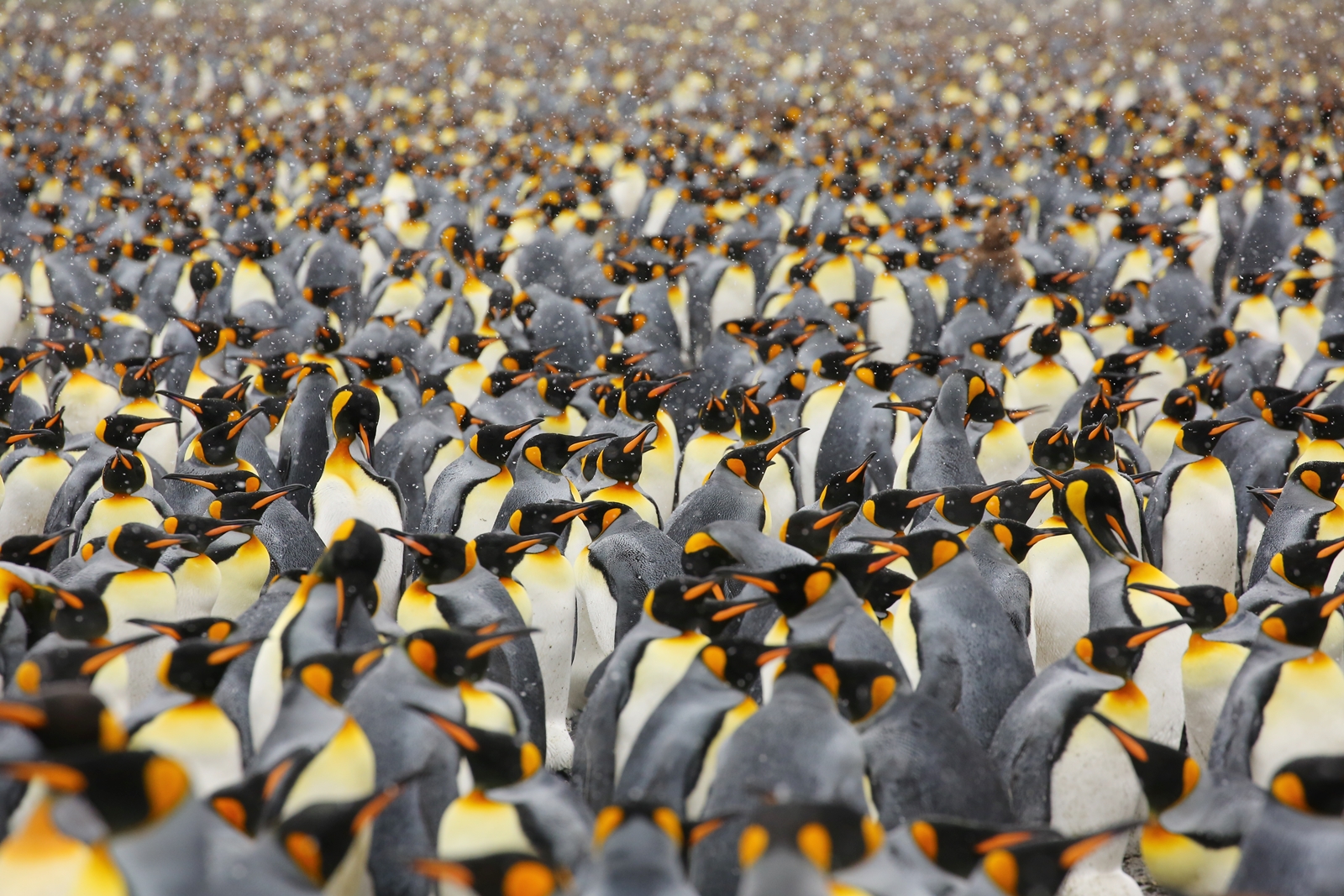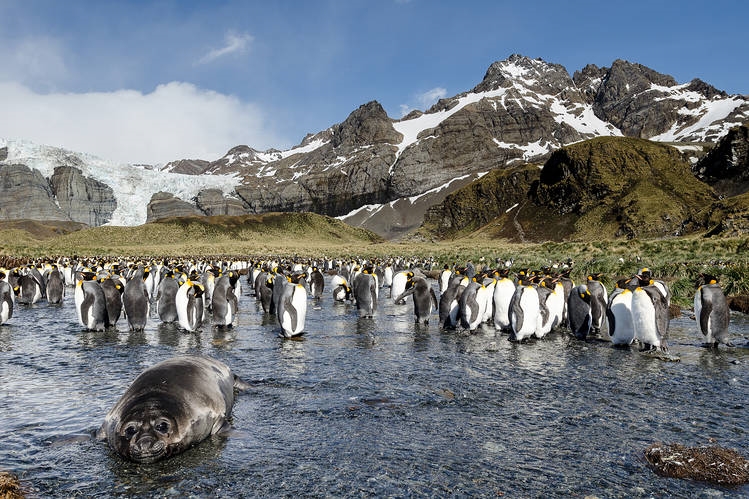South Georgia, which is 1,300 km (800 miles) south-east of the Falkland Islands, has a handful of temporary human inhabitants. The crescent-shaped, mountainous island is known for its diverse wildlife, glaciers and fjords.

South Georgia is sometimes called the “Galapagos of the Poles” because of the massive king penguin colony at Salisbury Plain, and other wildlife, including the thousands of fur and elephant seals.
Polar history enthusiasts are particularly keen to visit South Georgia. British explorer Sir Ernest Shackleton first crossed the island in 1916 in search of aid for his ill-fated trans-Antarctic expedition. Upon Shackleton’s death, his widow insisted the late great explorer be buried at the former whaling station at Grytviken on South Georgia.


- Visit massive penguin colonies where you would see up to 250,000 breeding King Penguins
- One of the most historically significant sites on South Georgia Island is Grytviken, which at one time was the largest whaling station on South Georgia
- Visitors will also find other species of penguins (Chinstrap, Gentoo, Macaroni etc), Antarctic Fur seals, Leopard seals, Elephant seals, Brown skua, Giant petrels and Antarctic terns
- Amazing scenery with glaciers and fjords in the islands
The preferred time to visit is between November and March when the sea ice conditions allow ships to navigate.
Nov - early Feb would be ideal for penguins sighting, from mid-Feb onwards penguins parents go to the sea to feed, and most colonies are nearly vacated by early March.